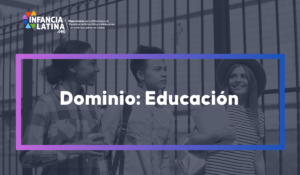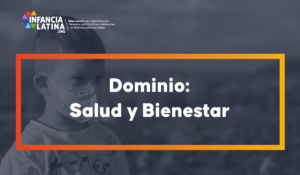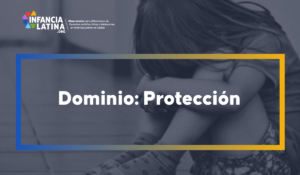Although the countries of Latin America and the Caribbean benefited from sustained economic growth, particularly notable in the early 2000s, the region remains known for its persistent inequality. Before the COVID-19 outbreak, there were clear signs that this progress was stalling and at the same time there was an increase in levels of public unrest and protest against power systems, demanding greater social justice. A structurally unequal society has particularly damaging effects on girls, boys and adolescents born into poor families and on their opportunities to develop towards their potential. The negative consequences are both immediate and long-term for their development. Deep-rooted cultural norms and social pressures in the region further exacerbate these economic and cultural divisions. This situation converts girls; indigenous and Afro-descendant populations; children in institutional care; children with disabilities; LGBTQIII +; and migrant children in vulnerable and at risk groups.
The availability of reliable and periodic statistical data that represents these audiences in a disaggregated manner is severely limited. Consequently, the inequality experienced by these groups is made invisible or the severity of their reality is diminished. According to a recent study by ECLAC (2016 and 2021) there are 8261 Indigenous villages
Children born into poverty commonly face severely limited access to health care, education, protection, and quality water and sanitation, particularly pronounced during times of crisis. They are more vulnerable to violence and exploitation in all its forms, from being extorted to participate in illegal activities. They are also more exposed to diseases. This translates into a high persistence of income inequality between generations and measurable differences in education and health. Furthermore, girls and boys from lower socioeconomic strata have a consistently lower capacity than their counterparts in socio-emotional, cognitive and language development. These skills gaps are further compounded by an economy that relies heavily on an informal labor market and the lack of a social safety net for the majority of its citizens. It is observed that workers in the informal sector and women have been the most affected by the economic contraction.
In the midst of the current COVID-19 crisis, the need to increase the resilience of Latin American and Caribbean societies has become urgent. Since 81% of the population lives in urban locations, there is a clear risk factor for the transmission of COVID-19, given the high demographic density (United Nations, 2019 and ECLAC 2021). According to a press release from ECLAC dated July 15, 2020, an estimated GDP drop of -9.1% is expected in South America, a drop of -8.4% in Central America and Mexico, and -7.9% in the Caribbean when excluding Guyana (whose strong growth reflects a lower contraction of the subregional total, including what will be -5.4%) resulting from COVID. The countries of the Caribbean have suffered particular challenges as they have to rebuild after climatic disasters. These disasters have limited its fiscal capacity and response to the pandemic. At the same time, they are at a disadvantage due to the great dependence they have on imported goods. The blow to the tourism sector, which represents 15.5% of the region's GDP, is also significant.
The situation of children living in vulnerable conditions amid the COVID outbreak is serious and will be prolonged. Immediate and sustained action is required to reduce and slow down its impacts in all domains of child and youth development. In particular, actions are required for the most vulnerable population sectors. In order to create public policies that can achieve the objectives on the way to the Sustainable Development Goals, it is necessary to invest in recurring statistical instruments, such as censuses, in order to achieve disaggregated data and focus children and youth within comprehensive policies that have a focus on Lifecycle. One of the agreements of the Montevideo Consensus on Population and Development (2014) and goal 18 of SDG 17, seeks the disaggregation of data by indigenous populations, establishing this as the responsibility of the States. In order to monitor the rights of girls, boys and adolescents in the region, it is extremely important to have population and demographic data that can be representative of the population.
In short, we are committed to working in alliance with national and international networks in order to achieve a look that celebrates all the diverse cultural wealth that exists in the region, as one of our main goals in contributing to girls, boys and adolescents in full exercise of your rights.
1 recognized in legislation and public policy instruments by the States
Sources:
Inter-American Development Bank (2020) The crisis of inequality: Latin America and the Caribbean at the crossroads. Editors: Matías Busso, Julián Messina. https://publications.iadb.org/publications/spanish/document/La-crisis-de-la-desigualdad-America-Latina-y-el-Caribe-en-la-encrucijada.pdf
Economic Commission for Latin America and the Caribbean (ECLAC), Social Panorama of Latin America, 2020 (LC / PUB.2021 / 2-P / Rev.1), Santiago, 2021. https://www.cepal.org/es/publicaciones/46687-panorama-social-america-latina-2020
Economic Commission for Latin America and the Caribbean (ECLAC): Statistics and Economic Projections Division (2008) Decomposition of the Gini coefficient by sources of income: empirical evidence for Latin America 1999-2005. https://www.cepal.org/es/publicaciones/4767-descomposicion-coeficiente-gini-fuentes-ingreso-evidencia-empirica-america-latina
Economic Commission for Latin America and the Caribbean (ECLAC) (2016) The matrix of social inequality in Latin America.https://www.cepal.org/es/publicaciones/40668-la-matriz-la-desigualdad-social-america-latina


